Detective hounds, free-range hens, grumbling toddlers, an ode to bugs and an adventure-filled fairytale. There’s an abundance of love, acceptance, friendship, parties, tantrums and surprises in these new picture books from Aotearoa.
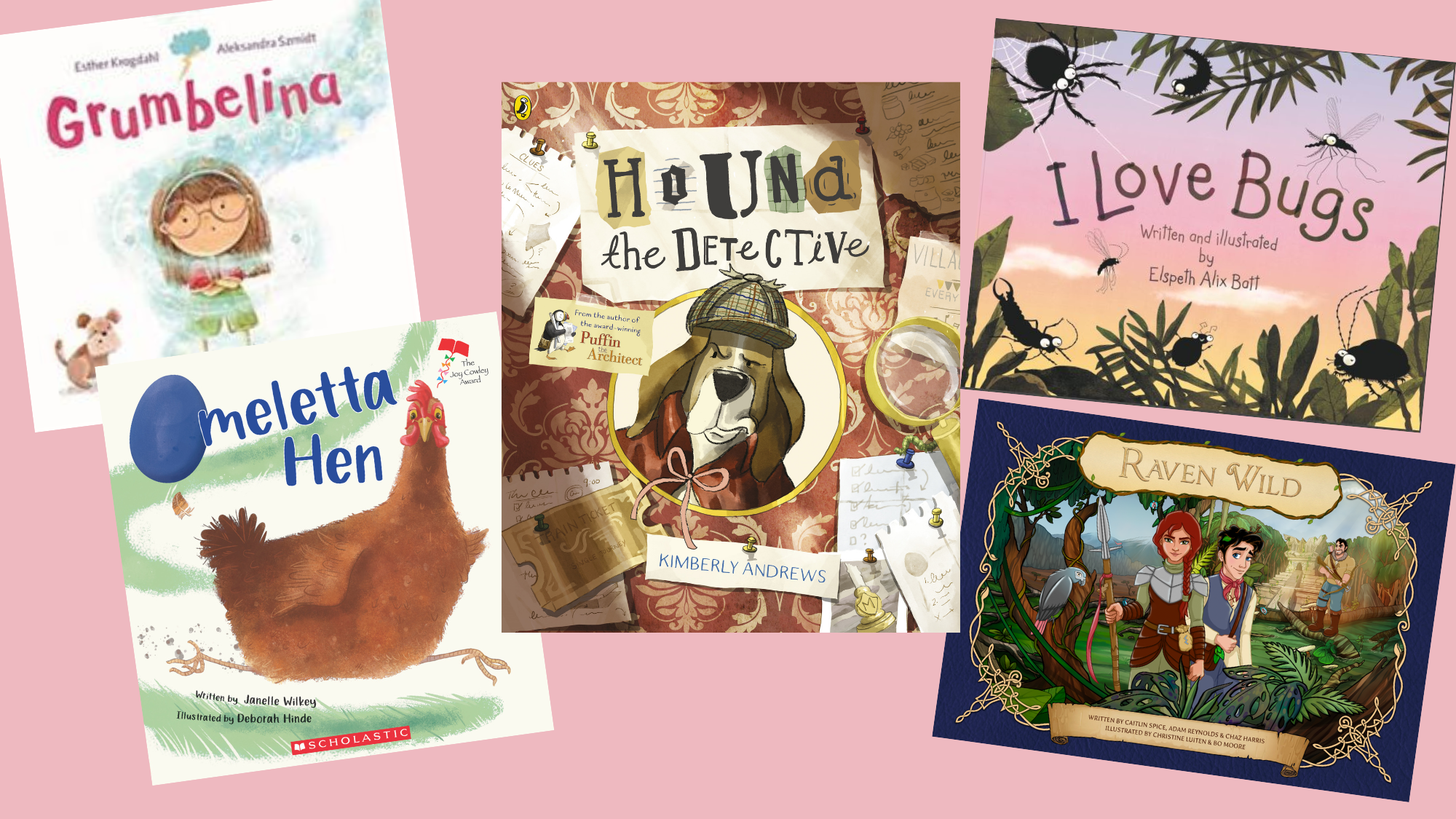
Hound the Detective by Kimberly Andrews (Puffin)
Hound the Detective is a book that begs to be read to a child—with detailed illustrations, a large format, a gentle alternate rhyme scheme and a repetitious refrain. The text is not overworked, as some rhyming text can be and Hound never forgets that it has a story to tell. I am not sure how I can tell the story without giving away the ending, so I’m diving right in here: scroll down to the next paragraph now if you don’t want to know the ending.
Hound’s friends have sent him on a hunt to find his own surprise birthday party. Those tricky tricksters! And in every illustration they are hiding from him as they prepare presents, food and decorations for the party. Bear hiding behind a tree in the woods and Flamingo creeping downstairs bring me a lot of joy each time I spy them. The added bonus of this book is it is, of course, the perfect birthday gift!
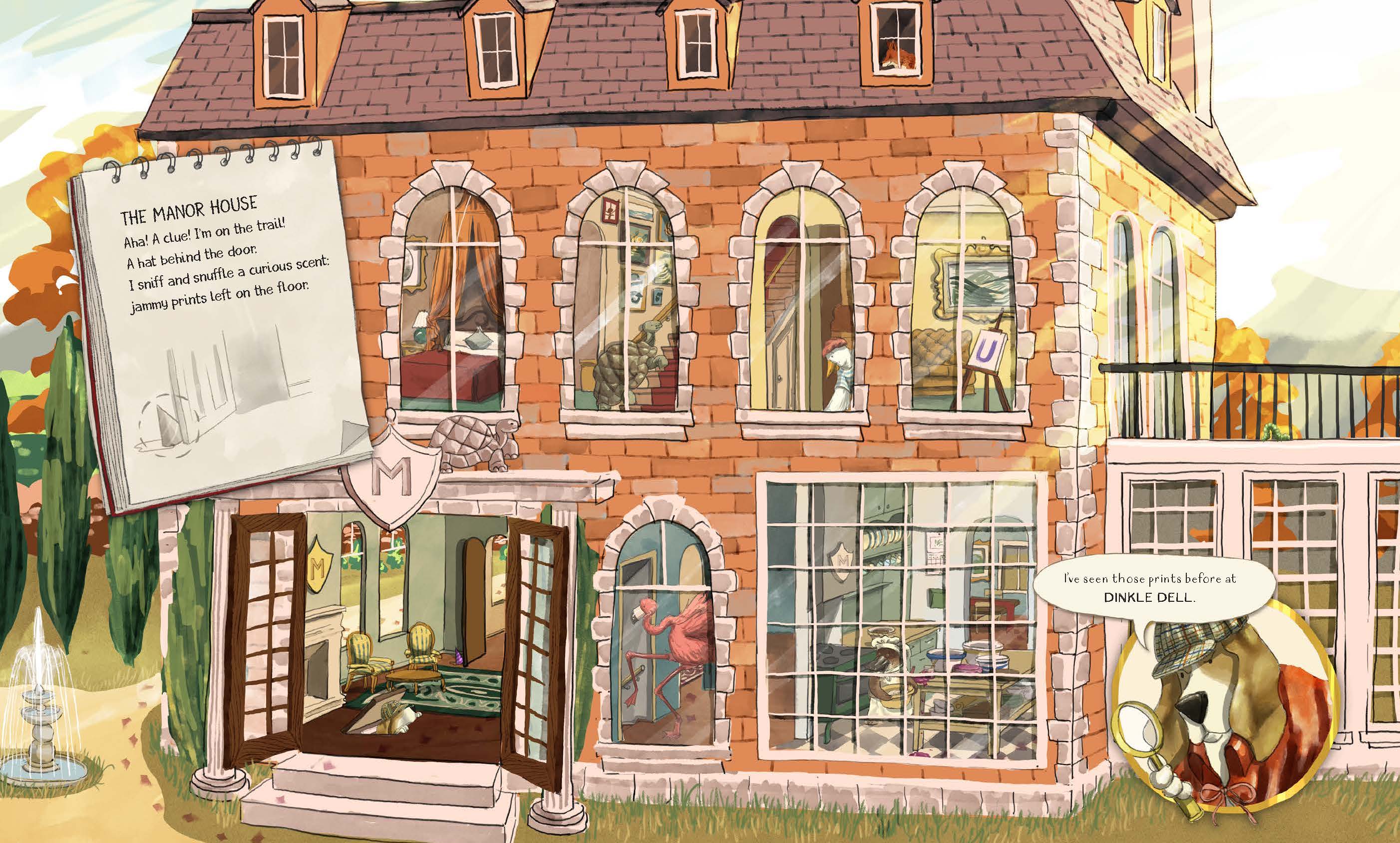
Kimberly’s illustrations are glorious, and I feel like this might just become something that is a given with her books but I don’t want to understate how wonderful they are. This is an illustrator that understands light, and while some scenes are quite dark, each illustration plays with light in a way that brings life to each spread. From the sun dappling through the trees, to the glass door that reads ‘The General Store’ being reflected onto the floor, to moody street lamps Kimberly proves she knows how to use light time and time again to evoke emotion in a picture.
The detail is extraordinary, and reminiscent of one of my favourite illustrators, Inga Moore, who manages to create warm, tender and funny all at the same time with an array of forest animals. Kimberly is no exception, and anyone who has read and enjoyed the animals featured in Puffin the Architect, will be thrilled to welcome their friends back into their picture book lives. I don’t know where these guys live, but I want in.
…anyone who has read and enjoyed the animals featured in Puffin the Architect, will be thrilled to welcome their friends back into their picture book lives.
Readers are also encouraged to search for a caterpillar who turns up 17 times throughout the story, so while Hound is on the hunt, so are the readers. This is a feature that while encouraging kids to study the pictures, will also have them rereading just to find the caterpillars.
Hound the Detective has a lot going for it: a fun premise, lots to look at, beautiful illustrations and a world that makes you want to join the characters and be a part of the story.
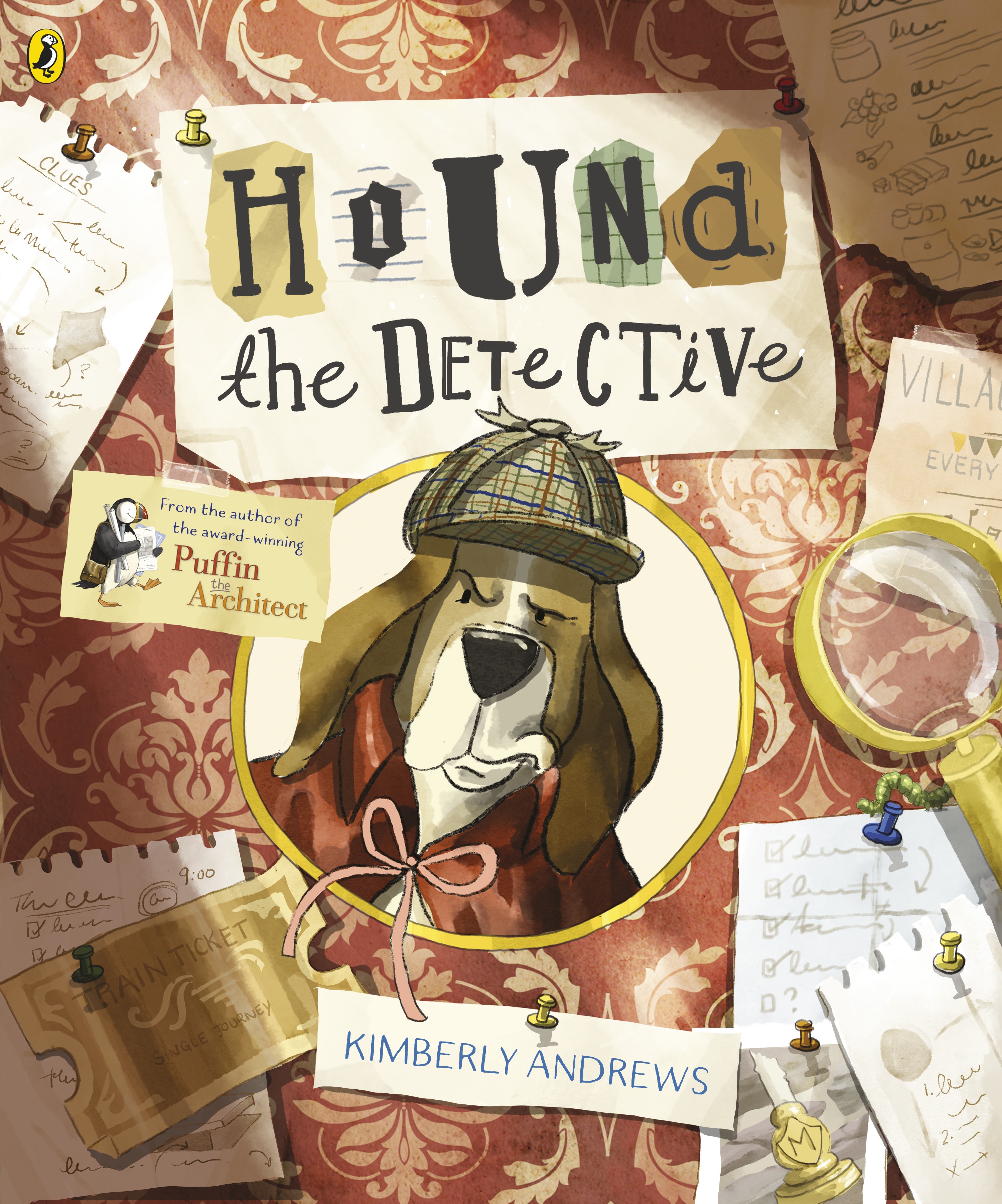
I Love Bugs, by Elspeth Alix Batt, (OneTree House)
I don’t love bugs. They are sort of gross and if they’re not eating my plants, they’re getting into our wiring. And I’m sorry, but those bug-eyed (pun intended) grubs on the first page are shredding that tree! However, the narrator is able to look past this horrifying scene to state that they love grubs because they’re so wrinkly and wriggly, spiders are jumpy and jiggly and so it goes. The rhymes are so upbeat and bouncy, and if you wondered what rhymes with scratchy it is ‘tricky-to-catchy’; you’re welcome.
The rhymes are so upbeat and bouncy, and if you wondered what rhymes with scratchy it is ‘tricky-to-catchy’; you’re welcome.
This simple, fun text is perfect for young readers; they will enjoy the multitude of reasons to love bugs. If this was all the book did, it would be ‘okay’ for the very young, maybe a good, solid board book. The illustrations are cute, and the colours are vibrant—even the purple-blue nighttime scene with the moths, which is one of my favourites. However, this is one of those ‘but wait, there’s more!’ books.
‘So…Who am I?’ asks the narrator, a question I am slightly embarrassed to admit that I hadn’t thought of as I was reading this story: it was bouncing along okay, after all. The narrator is a grub-gobbling, spider-slurping, mosquito-munching, beetle-biting…’ oh, now we are cooking with gas, kids! And while I won’t give away who is narrating this story I will say the picture of them is fantastic: oh mon dieu, quelle surprise!
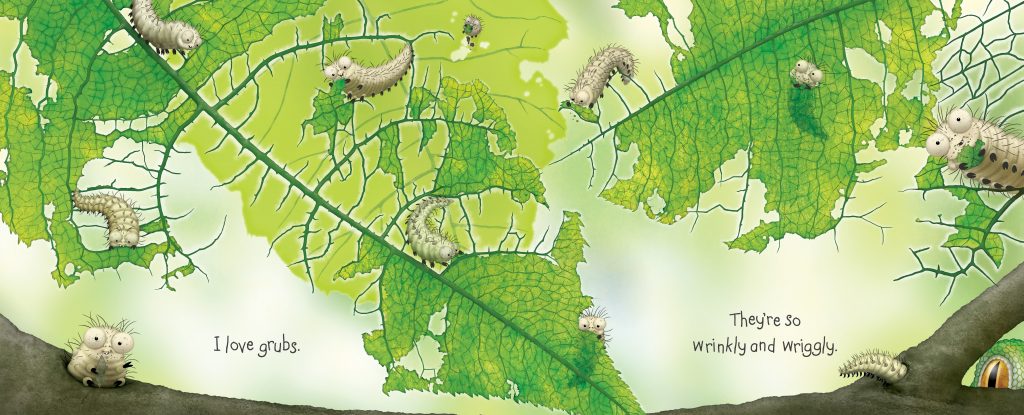
It is a funny and surprising ending that lifts the book, and readers can now go back and notice some clues along the way that will be fun for kids to point out. Although, kids being kids, they will most likely have noticed the clues already. I love how deeply children often read picture book illustrations; as adults we are often so busy reading the text we forget the illustrations have a story of their own to tell.
On the final spread there are very informative descriptions of the bugs you have just been reading about. I like the two-tone line drawings that make the text stand out without taking away from the illustration, they are simple but effective. Each bug has a bite size piece of information and their ingoa i te reo Māori. While the information may be slightly beyond the under 5s age range that the rest of this book feels set at, I think that is okay; parents can choose to read it out to those kids who love facts and not to those who don’t.
The blurb on the back cover sells this book as being ‘ideal for every budding entomologist’ and while that may be true, I am proof that you don’t even have to like bugs to enjoy this cute, jiggly and surprising picture book.
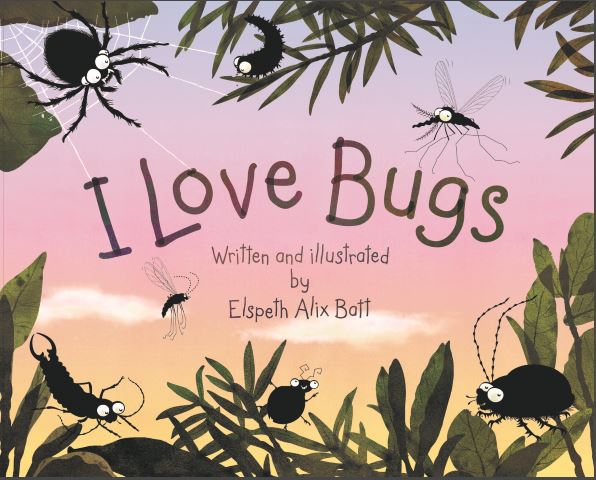
Omeletta Hen By Janelle Wilkey, illustrated by Deborah Hinde (Scholastic)
Anyone who keeps chickens will relate to this story of the free-range and free-spirited chicken called Omeletta, who lays her eggs everywhere but the chook house, much to the dismay of her owner Nelson. After the wilful chook lays an egg on Nelson’s head, he decides it is time to lock her in the hen house as a way to contain her and her eggs. However, Omeletta will not tolerate being a caged hen, and why should she? She refuses to lay any eggs until Nelson is taught that her eggs, like herself, need to be free.
This story had me looking up some things I just needed to know after reading it. My search bar history now contains ‘Do chickens fart?’ and ‘Do chickens lay big eggs after not laying for a while?’. I don’t know whether that speaks more to the story sparking my interest, my obsessive need for fact checking or just my general weirdness. But for your information, chickens DO fart, and while Google wasn’t clear on them laying bigger eggs after not laying I did discover they need good food, good hygiene and space to produce larger eggs. So, there we go… Omeletta knows what she needs.
This story had me looking up some things I just needed to know after reading it. My search bar history now contains ‘Do chickens fart?’
The soft green, blue and brown illustrations with lots of white on the page suit the rural feel and are clean and crisp. But the murderous look on Omeletta’s face when she is fretting and fuming is golden. I want a copy of it framed in my house, and I will just point to it every time someone annoys me. Omeletta steals the show here, Nelson is cute and well, fine, but Omeletta is the star and her expressions upstage Nelson on every page. Although, I may have just taken against Nelson because he tries to cage Omeletta.
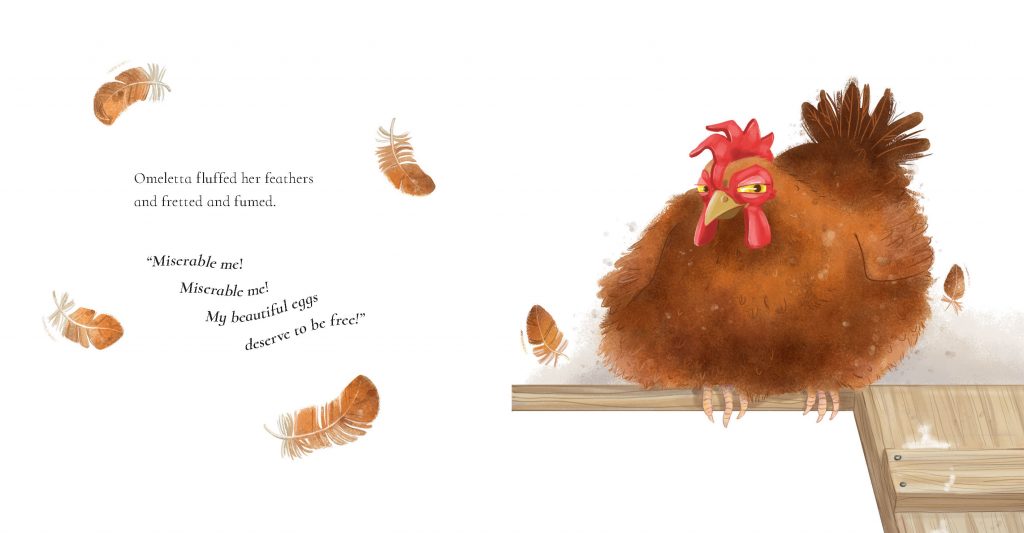
As Omeletta lays her eggs in strange places, I would have liked to see more directional language—in, on, under, over, between, it’s a great way to teach kids this information—like stuffing sausage rolls with grated carrots. You don’t know you’re learning, but you are. And it makes the language a little more interesting. I did want a little more from the language in general; I like words that kids can roll around their brains and use later, but these are very minor critiques.
This is a simple and entertaining story that will be enjoyed by rural and urban kids, who may each perhaps get something different out of it. The latter might need to ask a few questions, like ‘do chickens fart?’, while kids with chickens will find a story that resonates with them and their own chooks. Everyone under seven will giggle at the hen farting, this is a given. Sigh. But I am all about Omeletta; I like that she knows what she wants, and what’s good for her.
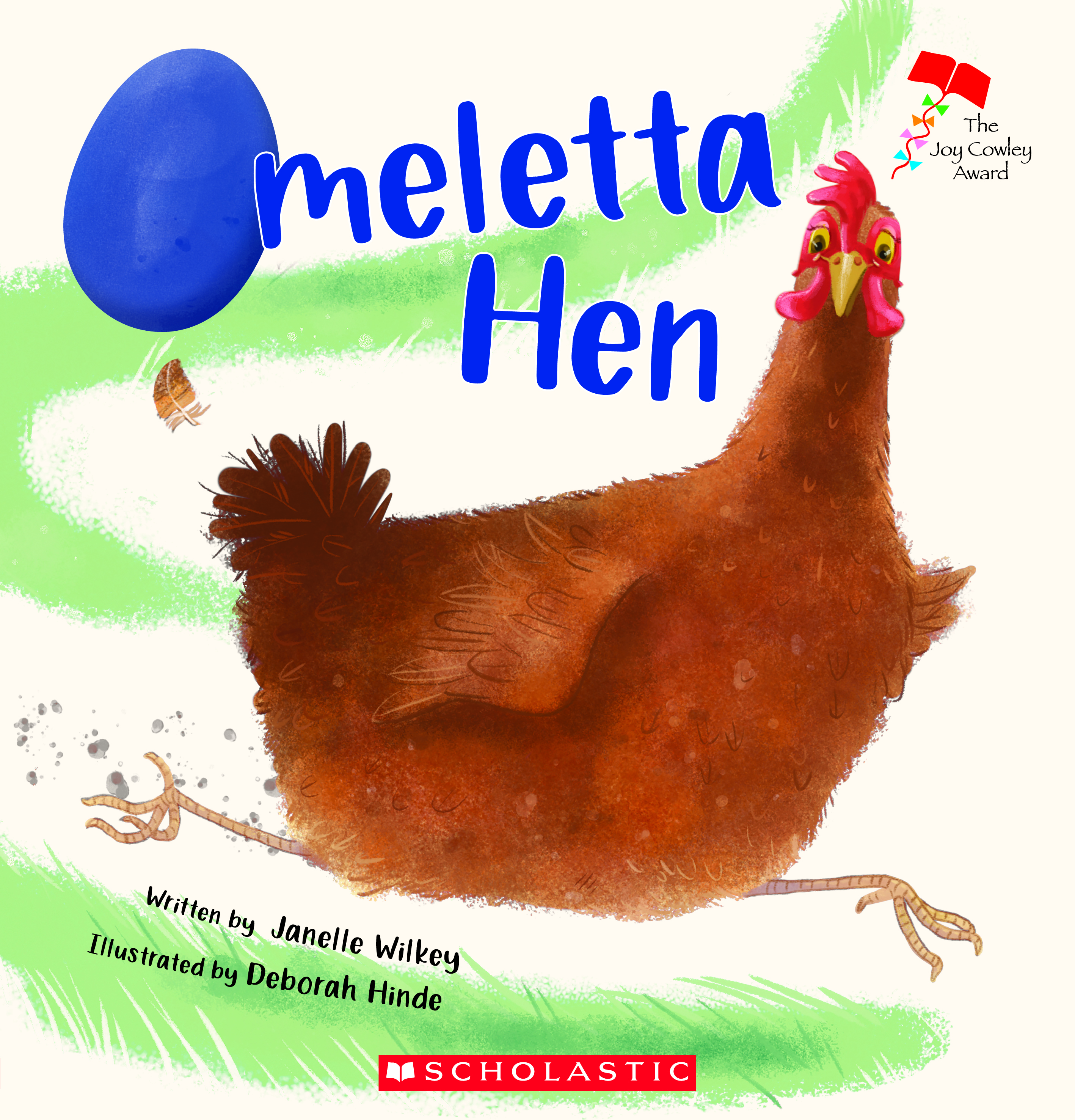
Omeletta Hen
by Janelle Wilkey
Illustrated by Deborah Hinde
Published by Scholastic
RRP $18.00
Raven Wild By Caitlin Spice, Adam Reynolds and Chaz Harris Illustrated by Christine Luiten and Bo Moore (Promised Land)
I’m starting at the beginning, and for me the end pages are always the beginning. I recently reviewed The Inkberg Enigma, and loved seeing some familiar names in the map at the beginning, so when I turned to the map showing the Realm of Nimalia, I had to laugh about Mt. Spice, Fort Knox, Point Logie, the Bechdel Sea and Mt. McKellen. I love these little details for no other reason than they entertain and make me smile. When I turned the page to the dedication: ‘In memory of the many lost childhoods of trans people’ it stopped me smiling and broke my heart a little. It is a reminder of the importance of seeing ourselves in books, of how books can rescue us and throw us a lifeline in times of need.
It is a reminder of the importance of seeing ourselves in books, of how books can rescue us and throw us a lifeline in times of need.
The Promised Land series includes Promised Land, Maiden Voyage and now Raven Wild, and they cover experiences across the Rainbow spectrum in a fairytale format. So for me, there is something simultaneously contemporary and nostalgic about these books—the fairytale element and the distinctly ‘Disney’ feel to the illustrations all remind me of books from my childhood. And while fables and the Disney-fication of stories will be familiar to kids nowadays too, the themes and acceptance portrayed in the illustrations and by the characters is like nothing I ever encountered in books I read as a child, or even as a teen. I am fond of the crowd scene that looks like an event at Pride, you might even spot a couple you recognise. And the easy acceptance of Raven’s parents and Finn is very heartwarming, especially when Finn says he always thought of her as a Raven, and we realise that on some level, he always saw her for who she was. Cue all the feels!
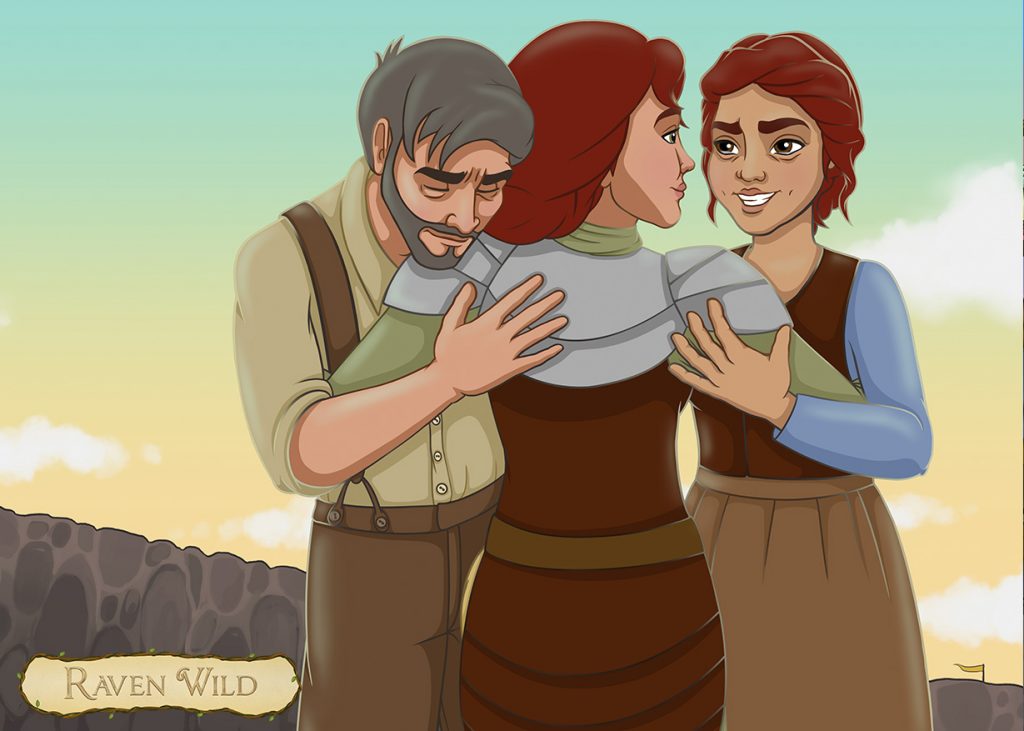
The illustrations are well-crafted, energetic and exciting, and as such suit the adventure element of the story. The story itself is a little heavy on the detail and quite long, making it more suitable for an older readership of around 7+. I think kids who can read the text themselves will really enjoy the high octane adventure, but I know it can be a struggle to get older kids to read picture books, as many kids (and adults) believe that picture books are just for little kids. They really aren’t! Illustrations help tell the story and the language is frequently more complex in a picture book than it is in an early chapter book.
This story is a little more schmaltzy than my cold hard heart can handle at times, but it is hard to underestimate the importance of this collaboration of writers and illustrators who create stories that allow kids to see themselves or their whānau and friends. They encourage and support a future that is more tolerant than our past.
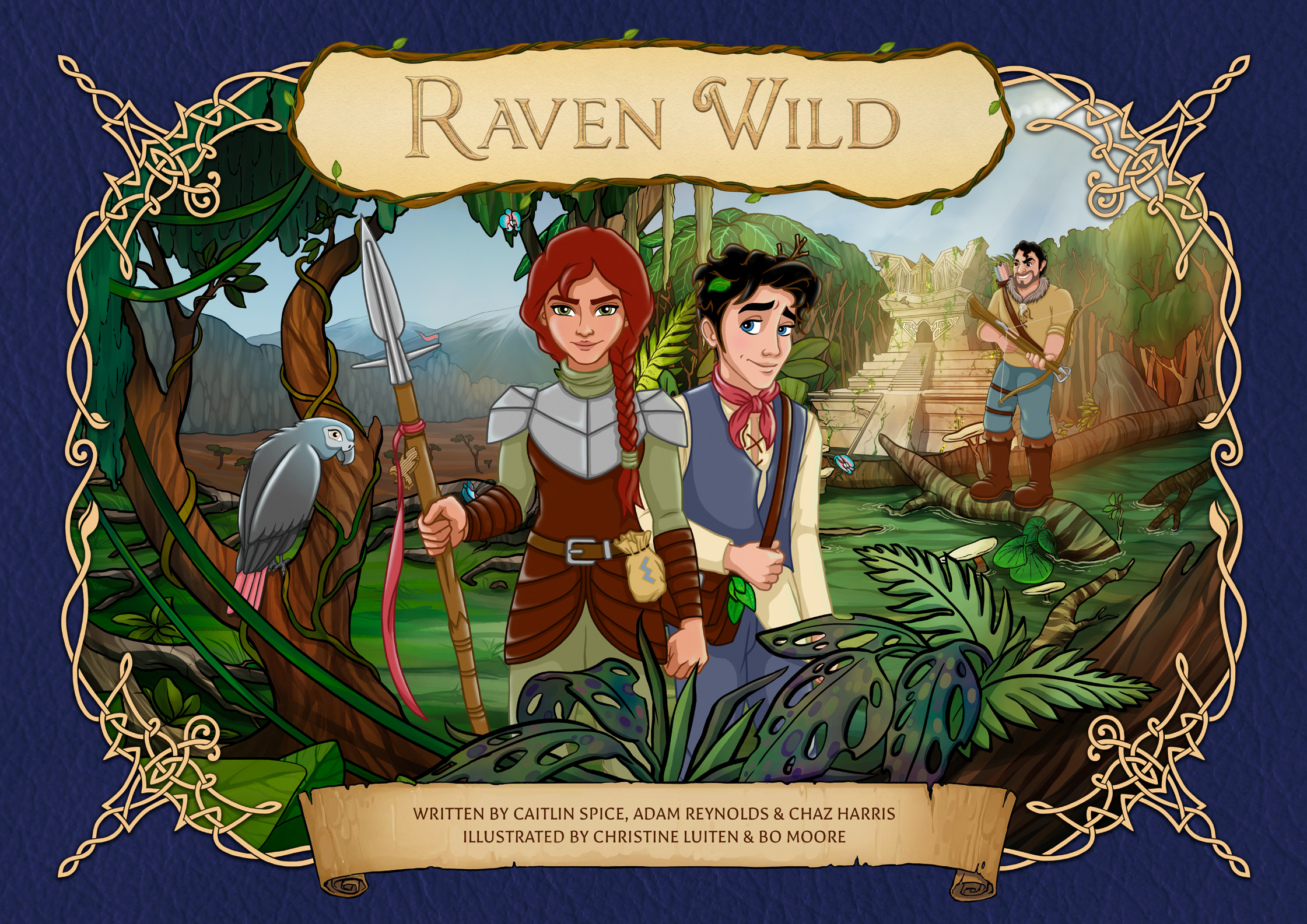
raven wild
Written by Caitlin Spice, Adam Reynolds and Chaz Harris
Illustrated by Christine Luiten and Bo Moore
Published by Promised Land
RRP $20.00
Grumbelina by Esther Krogdahl and Aleksandra Szmidt, (Moa)
’’Hazel Spratt was an agreeable child, never impatient, unruly or wild. Her manners were used with impeccable timing, she would never dream of whingeing or whining.” Emphasis on the WAS: Hazel WAS an agreeable child, who turns into the very disgruntled Grumbelina. The poor dog is rejected because it isn’t a cat, and not even mum’s deep breathing exercises work on her. Finally, she wears herself and her parents out, and is once again sweet, patient and wise, just in time for bed. But will she remain this way or is Grumbelina just a little bit wicked?
…is Grumbelina just a little bit wicked?
The rhyming text flows along at a cracking pace and makes it perfect for reading aloud. Toddlers, whose capricious natures are the perfect audience for this story, will love the delightful freedom that comes from reading about others’ bad behaviour…or maybe they won’t.
There is a lot to look at and point out to kids in the illustrations while reading this story as Grumbelina’s roiling tantrum has upended flowers, scared the dog and left a sea of ripped up drawings. But I found mum and dad’s facial expressions a little one note as they are pretty much the same smiling face throughout. These parents have been through the ringer, they are not going to be lying on the couch smiling. In all likelihood mum will be crying in the toilet and dad will be banging his head against a cupboard. No one will be smiling.
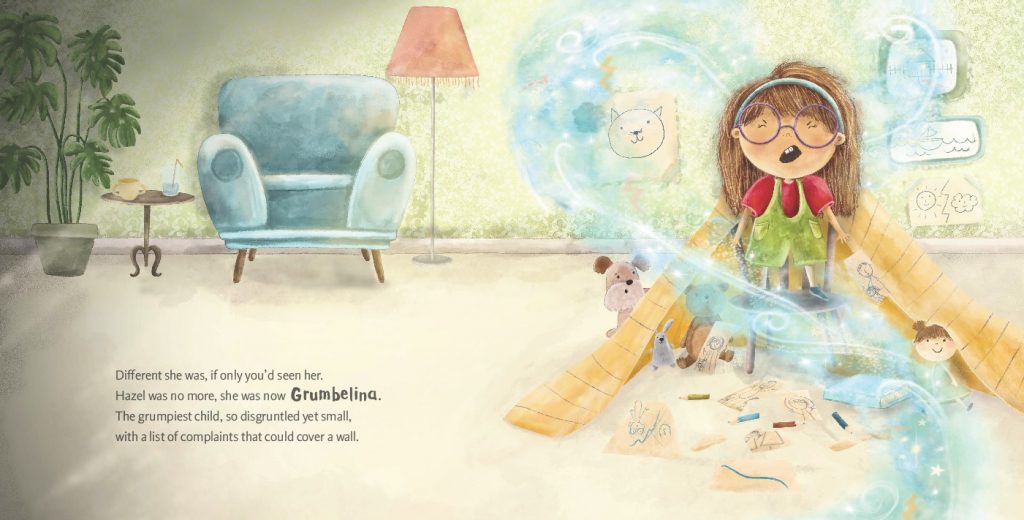
If you are the type of person who wants kids to see bad behaviour as a fleeting thing and maybe even find some things to do that might help, then this isn’t the book for you. I feel like your enjoyment of this book will depend on whether you like your book characters to be naughty or sweet and decide whether you find Grumbelina’s antics entertaining and the goody-two shoes Hazel a little too saccharine. It may cut a little too close for some parents, dealing with grumpy toddlers but I think the general feeling is one of humour, joy and loving your child no matter how grumpy they have been on any particular day (I mean, those parents in Grumbelina, they just keep smiling…)
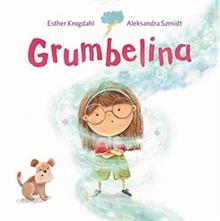
Grumbelina
Written by Esther Krogdahl
Illustrated by Aleksandra Szmidt
Published by Moa
RRP $20.00

Simie Simpson
Simie Simpson (Te Ati Awa) has worked in the New Zealand book industry for almost two decades, as a librarian, a sales manager for Walker Books New Zealand and a bookseller. She is the programmes manager for Read NZ Te Pou Muramura.



